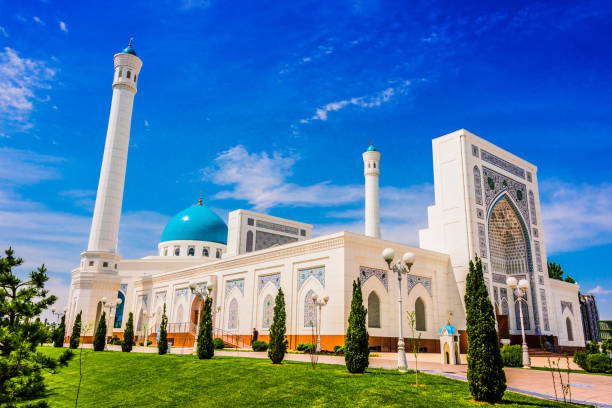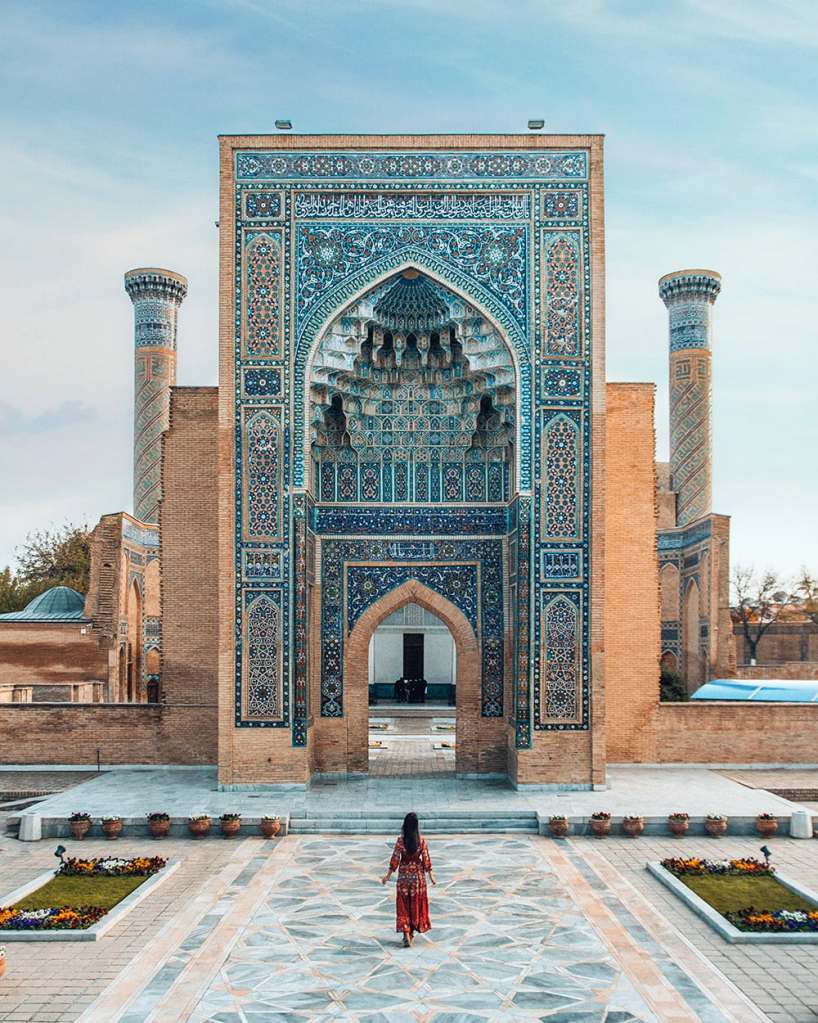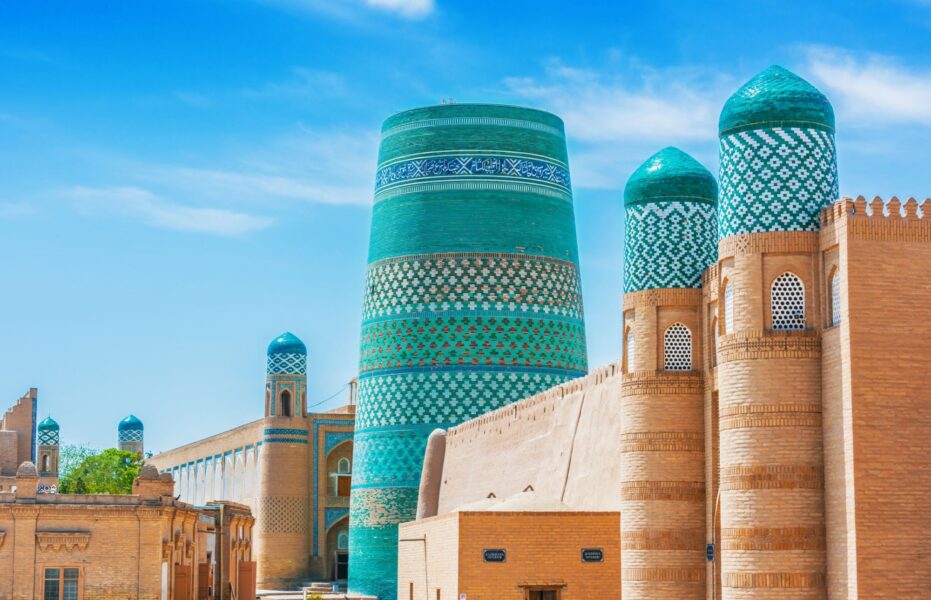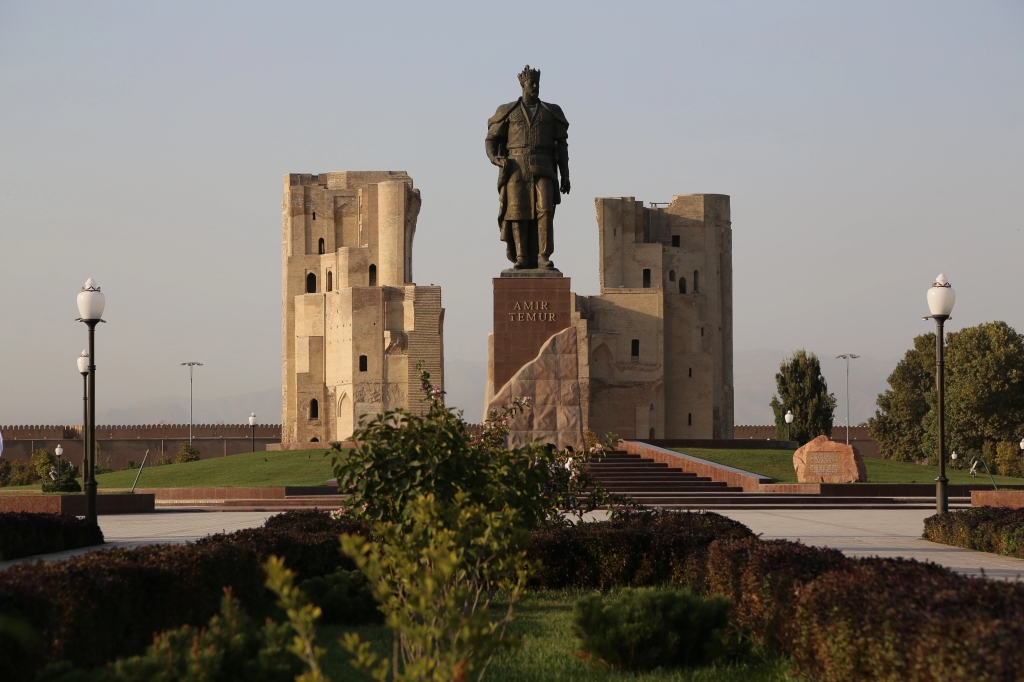
Tashkent
Tashkent (Uzbek: Toshkent or Тошкент, Russian: Ташкент)) is the capital city of Uzbekistan. It is also the most populated city in Central Asia, with a population of 2,603,000 in 2023. Its name means “Stone City” in English. It is located in northeastern Uzbekistan, near the border with Kazakhstan. Before Islamic influence started in the mid-8th century AD, Tashkent was influenced by the Sogdian and Turkic cultures. After Genghis Khan destroyed it in 1219, it was rebuilt and profited from the Silk Road.

Samarkand
Samarqand or Samarkand (/ˈsæmərkænd/ SAM-ər-kand; Uzbek and Tajik: Самарқанд, pronounced [sæmærqænd, -ænt]; Persian: سمرقند) is a city in southeastern Uzbekistan and among the oldest continuously inhabited cities in Central Asia. Samarqand is the capital of Samarqand Region and a district-level city, that includes the urban-type settlements Kimyogarlar, Farhod and Khishrav. With 551,700 inhabitants (2021),it is the second-largest city of Uzbekistan.

Bukhara
Bukhara is an ancient city in the central Asian country of Uzbekistan. It was a prominent stop on the Silk Road trade route between the East and the West, and a major medieval center for Islamic theology and culture. It still contains hundreds of well-preserved mosques, madrassas, bazaars and caravanserais, dating largely from the 9th to the 17th centuries.

Nurota
Nurota is a city and seat of Nurota District in Navoiy Region in Uzbekistan. Its population is 32,300.The construction of Karez, a unique underground water-pipeline system near Nurota, is also connected with the name of the Alexander the Great. Kariz is an ancient water-pipe laid from the source of the spring water to a place where it could be used. Its length could reach several kilometers. Interconnected wells that were dug out in several meters apart from each other, were used for the cleaning the pipeline system. Today the process of reviving these old pipeline systems is taking place.

Termez
Termez (Uzbek: Termiz/Термиз; Persian: ترمذ Termez, Tirmiz; Arabic: ترمذ Tirmidh; Russian: Термез; Ancient Greek: Tàrmita, Thàrmis, Θέρμις) is the capital of Surxondaryo Region in southern Uzbekistan. Administratively, it is a district-level city. Its population is 182,800 (2021). It is notable as the site of Alexander the Great’s city Alexandria on the Oxus, as a center of early Buddhism, as a site of Muslim pilgrimage, and as a base of Soviet Union military operations in Afghanistan, accessible via the nearby Hairatan border crossing.

Khiva
Khiva (Uzbek: Xiva, Хива, خیوه; Persian: خیوه, Xīveh; alternative or historical names include Kheeva, Khorasam, Khoresm, Khwarezm, Khwarizm, Khwarazm, Chorezm, Arabic: خوارزم and Persian: خوارزم) is a district-level city of approximately 93,000 people in Khorazm Region, Uzbekistan.[2] According to archaeological data, the city was established around 1500 years ago.It is the former capital of Khwarezmia, the Khanate of Khiva, and the Khorezm People’s Soviet Republic. Itchan Kala in Khiva was the first site in Uzbekistan to be inscribed on the World Heritage List (1991). The astronomer, historian and polymath, Al-Biruni (973–1048 CE) was born in either Khiva or the nearby city of Kath.

Shahrisabz
Shahrisabz is a district-level city in Qashqadaryo Region in southern Uzbekistan. The Economic Cooperation Organization has selected Shakhrisabz as its tourism capital for 2024. It is located approximately 80 km south of Samarkand, at an altitude of 622 m. Its population is 140,500.

Nukus
Nukus (Karakalpak: Nókis / Нөкис; Uzbek: Nukus / Нукус) is the sixth-largest city in Uzbekistan and the capital of the autonomous Republic of Karakalpakstan. The population of Nukus as of 1 January 2022 was 329,100. The Amu Darya river passes west of the city. Administratively, Nukus is a district-level city, that includes the urban-type settlement Karatau.